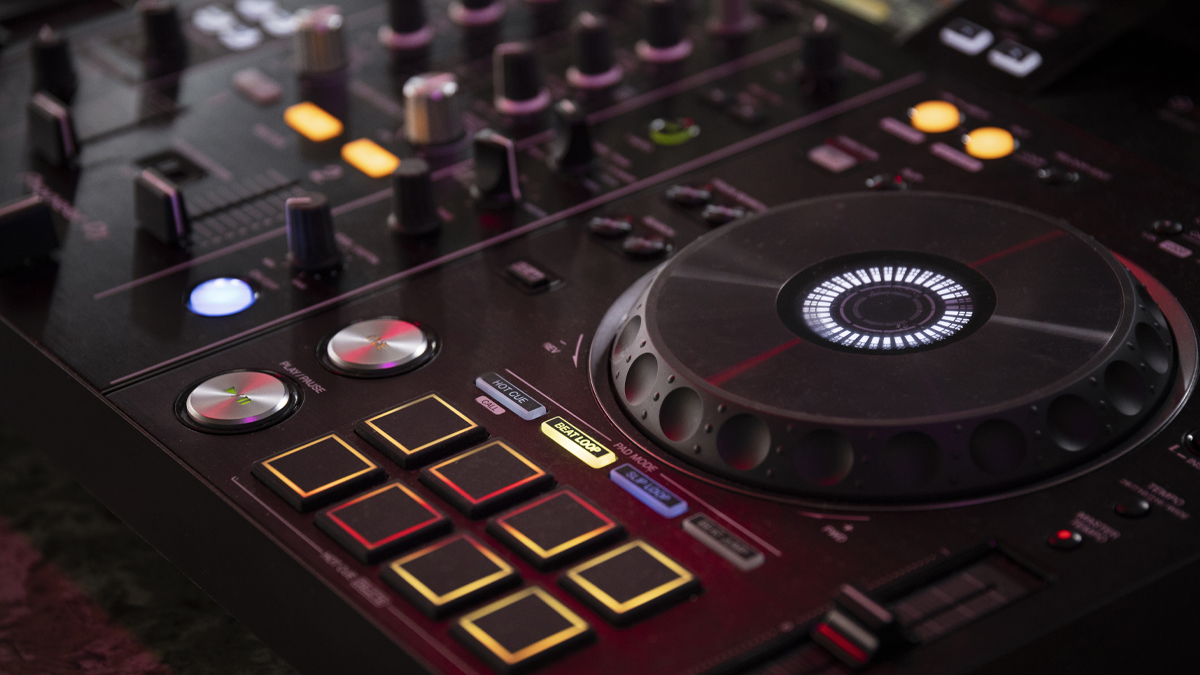Advancements in sensor technology, digital signal processing, and connectivity have revolutionized smart musical instruments. At the core of this evolution is the Multidimensional Music Controller, which combines precision engineering with artistic creativity. This article provides a concise overview of the core components and systems that power the instrument, from sensor fusion to modular hardware design. It highlights how state‐of‐the‐art design elements foster responsiveness and expressiveness in performance, while encapsulating the Electronics and Technology Behind Multidimensional Music Controller in innovative and efficient ways.
| Table of Contents | |
|---|---|
| I. | Multi-Axis Sensor Integration and Fusion |
| II. | High-Speed ADC/DAC Systems |
| III. | Advanced Embedded Microcontrollers and DSPs |
| IV. | Real-Time Digital Signal Processing (DSP) Algorithms |
| V. | Robust Signal Conditioning and Analog Front-End Circuitry |
| VI. | Low Latency Data Bus and Communication Interfaces |
| VII. | Wireless Connectivity Modules and Protocols |
| VIII. | Advanced MIDI Protocols and Digital Interfaces |
| IX. | Customizable Firmware and Real-Time Operating Systems (RTOS) |
| X. | Power Management and Energy Efficiency Solutions |
| XI. | Modular, Reconfigurable Hardware Architectures |
Multi-Axis Sensor Integration and Fusion
In a Multidimensional Music Controller, multi-axis sensor integration enables precise detection of motion and orientation. Fusion algorithms combine inputs from gyroscopes, accelerometers, and magnetometers, converting complex physical gestures into nuanced musical expressions. This synchronization of digital and analog data ensures dynamic modulation and expressive control over pitch and effects, reinforcing the controller’s role as a smart instrument that elevates live performance through real-time responsiveness.
High-Speed ADC/DAC Systems
High-speed ADC/DAC systems convert analog signals from a performer’s inputs into digital data and vice versa, ensuring immediate responsiveness in a Multidimensional Music Controller. This rapid conversion is critical for maintaining sound fidelity and dynamic expressiveness. The seamless interplay between analog and digital domains allows smart musical instruments to capture subtle performance cues, fostering accurate audio reproduction and enhancing creative expression during live performances.
Advanced Embedded Microcontrollers and DSPs
Embedded microcontrollers and digital signal processors serve as the central processing units in a Multidimensional Music Controller. They manage sensor data, execute complex algorithms, and coordinate real-time responses, all within a compact design. By integrating cutting-edge processing power with intuitive software design, this section embodies the Electronics Behind Multidimensional Music Controller—empowering musicians with precise control and robust performance capabilities that bridge innovation with artistic expression.
Real-Time Digital Signal Processing (DSP) Algorithms
Real-time DSP algorithms are fundamental in transforming raw sensor inputs into refined audio outputs in a Multidimensional Music Controller. These algorithms perform critical tasks such as filtering, dynamic range compression, and spectral analysis on-the-fly, ensuring that every nuance of a performance is accurately captured. This rapid processing minimizes latency and ensures that the instrument remains both responsive and musically expressive during complex, live performances.
Robust Signal Conditioning and Analog Front-End Circuitry
Robust signal conditioning and analog front-end circuitry pre-process incoming audio signals in a Multidimensional Music Controller. These circuits filter noise, amplify subtle inputs, and maintain signal integrity, setting the stage for high-quality digital conversion. By ensuring that only clear, stabilized signals reach the processing unit, this stage is pivotal in preserving fidelity and responsiveness—integral for the expressive range and reliability demanded in smart musical instrument performance.
Low Latency Data Bus and Communication Interfaces
A low latency data bus and optimized communication interfaces are vital for the seamless operation of a Multidimensional Music Controller. They facilitate rapid data transfer between sensors, processors, and sound generators, effectively reducing response delays during performance. This high-speed interconnectivity ensures that even the most intricate musical gestures are captured and reproduced in real time, enhancing the fluidity and precision required by modern smart musical instruments.
Wireless Connectivity Modules and Protocols
Wireless connectivity modules introduce flexibility and mobility to the Multidimensional Music Controller. By incorporating Bluetooth, Wi-Fi, and other wireless protocols, these modules support uninterrupted, cable-free interaction with digital devices. Rapid, secure data exchange allows performers to integrate their instrument into a broader network of smart devices. This advanced connectivity exemplifies the Technology Behind Multidimensional Music Controller, enabling innovative setups that enhance live performance and studio integration.
Advanced MIDI Protocols and Digital Interfaces
Advanced MIDI protocols and digital interfaces are the communication backbone for a Multidimensional Music Controller. They translate complex sensor data into standardized commands, ensuring compatibility with a wide range of software and hardware. Enhanced MIDI capabilities allow for extended control parameters and richer expressive detail. This digital interoperability streamlines the creative workflow, linking traditional musical expression with modern, computer-based sound synthesis in a smart instrument ecosystem.
Customizable Firmware and Real-Time Operating Systems (RTOS)
Customizable firmware paired with real-time operating systems (RTOS) delivers adaptability and reliability in a Multidimensional Music Controller. This software layer enables tailored performance settings, precise timing, and system-wide stability under varying loads. Flexible firmware allows for continuous updates and bespoke customizations, ensuring that the instrument can evolve with the artist’s requirements. Such adaptability is crucial for maintaining real-time responsiveness and consistent performance in modern smart musical environments.
Power Management and Energy Efficiency Solutions
Efficient power management and energy efficiency solutions are critical for sustaining a Multidimensional Music Controller during live performance. Intelligent regulation and advanced circuitry optimize battery usage, preventing overheating and ensuring steady operation. These systems balance power consumption with high-performance demands to maximize both durability and reliability. By integrating optimized circuitry and energy-conscious design, this section reflects the principles of Electronics Behind Multidimensional Music Controller, ensuring that smart instruments deliver sustained excellence and innovation.
Modular, Reconfigurable Hardware Architectures
A modular hardware architecture offers flexibility and scalability to a Multidimensional Music Controller, accommodating future upgrades and custom configurations. This reconfigurable design allows musicians and engineers to easily tailor the instrument’s functionalities, adapt to new technologies, and optimize performance. The ability to swap out or enhance components without a complete redesign ensures longevity and versatility. This innovative approach is central to the Technology Behind Multidimensional Music Controller, positioning the instrument at the forefront of modern smart musical expression and technological progress.

